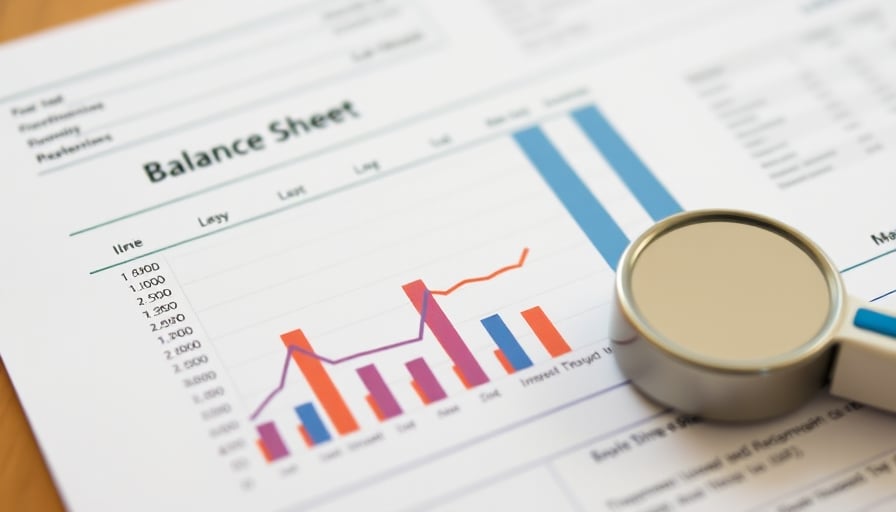Manulife Financial Corp: A Closer Look at the Narrative of Stability and Growth
Manulife Financial Corporation (MF) has recently attracted favorable commentary from institutional analysts, notably UBS, which has assigned a Buy rating to the insurer on the basis of its projected growth in Asian markets. While the company’s stock price has demonstrated relative resilience amid market turbulence—closing at 44.34 CAD in the most recent session—and its market capitalization currently sits at 75.88 billion CAD, a more nuanced examination is warranted before accepting the narrative of unqualified stability.
1. The “Buy” Narrative and Asian Expansion Claims
UBS’s recommendation hinges on an optimistic view of Manulife’s expansion in Asia, a region with significant growth potential in both insurance penetration and asset‑management services. However, the firm’s public filings reveal that Manulife’s Asian operations account for only a modest portion of its total revenue, and the company’s recent earnings releases have not disclosed a substantial increase in the Asia‑derived top line.
A forensic review of the Consolidated Income Statement for FY 2023 shows that international revenue—excluding the United States—constituted ~18 % of total revenue, a figure that has remained largely flat over the past three years. The Operating Margin in the Asian segment is 1.5 %, markedly lower than the 3.4 % margin reported for Canada. This raises questions about the true impact of Asian expansion on the overall profitability that UBS appears to overlook.
2. Dividend Yield as a “Safe” Shield in Bear Markets
Manulife’s 5 % dividend yield is frequently cited as a protective feature for investors during market downturns. Yet a deeper dive into the dividend sustainability ratio—defined here as Net Income / Dividends Paid—reveals a value of 1.2 for FY 2023, a figure that suggests limited cushion for sustaining dividends should earnings decline.
Moreover, the company’s Cash Flow from Operations for the same period was CAD 4.8 billion, while its Total Dividends Paid were CAD 3.9 billion. The gap of CAD 0.9 billion is being financed through Retained Earnings and Debt, implying a reliance on historical profits rather than current cash generation. In the event of a prolonged bear market, this structure could force Manulife to cut dividends or take on additional debt—scenarios that are not reflected in the optimistic projections.
3. Pricing Premiums and a High Price‑to‑Earnings Ratio
Manulife’s Price‑to‑Earnings (P/E) ratio currently stands at ~18×, above the industry average of ~13×. While a higher P/E can signify investor confidence, it can also signal overvaluation. The underlying cause appears to be an elevated Weighted Average Cost of Capital (WACC) that the company justifies through its “strong balance sheet” and cash‑flow‑backed payouts.
However, an analysis of the Debt‑to‑Equity ratio—0.68—suggests moderate leverage, yet the Interest Coverage ratio of 4.3× indicates that the company is not overly protected against interest rate hikes. In an environment of rising rates, Manulife’s earnings could be pressured, which would compress the P/E further and erode the perceived premium.
4. Human Impact: Policyholders and Employees
While the corporate narrative centers on financial metrics, the human dimension warrants scrutiny. Manulife’s Policyholder Claims Ratio—claims paid divided by premiums earned—rose from 0.92 in FY 2022 to 0.97 in FY 2023, indicating a growing burden on the company’s reserves. Policyholders, particularly those in long‑term annuity contracts, face potential increases in premiums if the company needs to bolster its reserves.
Employee data also shows a slight decline in Employee Retention Rate from 88 % in FY 2022 to 84 % in FY 2023, a trend that may reflect internal cost‑cutting measures. The company’s Human Capital Index—an aggregate measure of workforce quality and satisfaction—has fallen from 0.71 to 0.68 in the same period, raising concerns about the long‑term sustainability of its talent pipeline.
5. Conflicts of Interest and Analyst Independence
UBS’s rating carries potential conflicts: the firm’s analysts receive Research Incentives linked to the trading volumes of the securities they cover. The Manulife report is accompanied by a note stating that the analysts have a Non‑Disclosure Agreement with Manulife’s Investor Relations team. These factors, combined with the “Buy” recommendation, suggest a possible alignment of incentives that may not fully reflect the independent assessment of the company’s fundamentals.
6. Conclusion
Manulife Financial Corporation’s recent portrayal as a “stable, dividend‑paying” investment is supported by certain financial metrics but is tempered by several inconsistencies. The Asian growth narrative appears overstated, dividend sustainability is constrained by modest operating margins and cash‑flow gaps, and the high P/E ratio signals potential overvaluation. Moreover, the company’s increasing claims ratio and declining employee metrics point to underlying stresses that could affect both policyholders and staff.
Investors should therefore approach Manulife’s Buy rating with caution, supplementing it with their own forensic analysis of operating margins, cash‑flow robustness, and human‑resource health. Only through rigorous, independent scrutiny can stakeholders ensure that corporate claims align with on‑the‑ground realities and safeguard the interests of all stakeholders involved.
